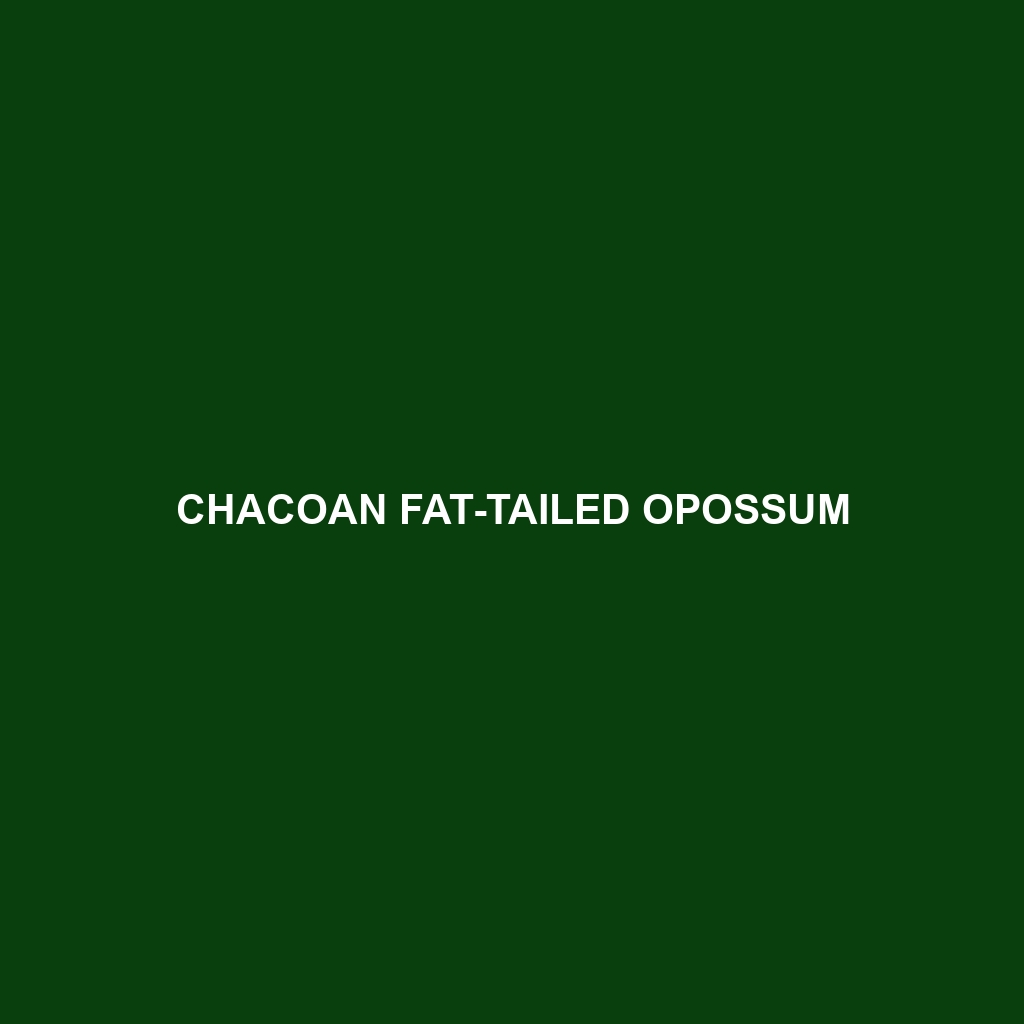Chacoan Fat-tailed Opossum (Thylamys pusillus)
The Chacoan Fat-tailed Opossum (Thylamys pusillus) is a small marsupial native to the Gran Chaco region of South America, specifically found in Paraguay, Bolivia, and Argentina. Renowned for its unique fat-storing tail, this species has evolved fascinating adaptations to thrive in its arid and semi-arid environment. As nocturnal creatures, they play a significant ecological role in their habitat and present intriguing behavioral traits.
Physical Characteristics
Size: The Chacoan Fat-tailed Opossum is relatively small, with an average body length ranging from 10 to 14 centimeters (4 to 5.5 inches) and a tail length of about 9 to 12 centimeters (3.5 to 4.7 inches).
Coloration: They possess a grayish-brown fur on their dorsal side, which helps them blend into the dry, scrubby environments. Their ventral side is lighter, often white or pale gray.
Special Features: The most distinctive feature is their “fat tail,” which stores fat reserves for periods when food is scarce. This adaptation is crucial for their survival during lean seasons.
Behaviors
Social Interactions: Chacoan Fat-tailed Opossums are generally solitary animals, coming together only during the breeding season. They are known for their secretive and elusive nature.
Feeding Habits: As omnivores, their diet includes a variety of insects, small vertebrates, fruits, and other vegetation. Their opportunistic feeding habits enable them to adapt to different food availabilities.
Ecological Roles: They are important for controlling insect populations and serve as prey for larger predators, maintaining the balance within their ecosystem.
Habitat
Geographical Range: The species is predominantly found in the Gran Chaco region, which spans parts of Paraguay, Bolivia, and Argentina.
Preferred Environment: They favor dry forests, scrublands, and savannas. Their ability to live in burrows or utilize abandoned nests enables them to find shelter in various conditions.
Adaptations
Fat Storage: Their ability to store fat in their tails is a significant adaptation, allowing them to endure periods without food.
Nocturnal Lifestyle: Being nocturnal helps them avoid daytime predators and the extreme heat of their environment.
Arboreal and Terrestrial Habits: Although they are primarily ground dwellers, they are also capable climbers, which aids in escaping predators and accessing different food sources.
Conservation Status
IUCN Red List: Currently, the Chacoan Fat-tailed Opossum is listed as “Least Concern” by the IUCN Red List. However, habitat destruction and climate change could pose future threats.
Conservation Efforts: Conservation initiatives focus on habitat preservation and monitoring population trends to ensure their continued survival.
Fascinating Fun Facts
Cryptic Nature: Due to their elusive habits, much about their behavior and ecology remains a mystery to scientists.
Survival Strategy: They can enter a state of torpor, a temporary hibernation-like state, to conserve energy during extreme conditions or food scarcity.
Unique Reproduction: As marsupials, females have a pouch where the young continue to develop after birth, a characteristic feature of this animal group.
The Chacoan Fat-tailed Opossum is a remarkable example of nature’s ability to adapt and thrive in challenging environments, making it a fascinating subject for wildlife enthusiasts and researchers alike.
